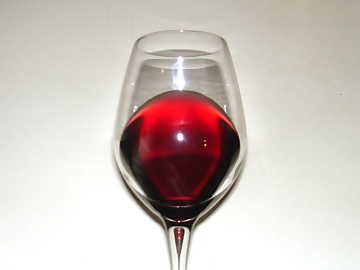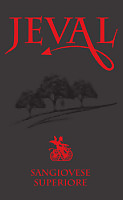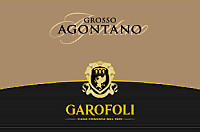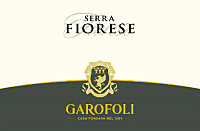|
The richness of grapes cultivated in Italy has no equals in any other place of
the world. From North to South, every region has its own indigenous varieties,
sometimes found in other regions as well, sometimes even spread in large areas
of the country. To these grapes should also be counted the so called
international varieties, that is spread in many wine countries of the
world and usually having a French origin. A huge heritage capable of making a
countless number of wines, each being the expression of its land and the men
who make them. If we then consider the wines produced by assembling different
grapes, the combinations are virtually endless, in particular if we consider
the many territories, men and wine making techniques. In order to understand
the richness of the Italian land, the Italian Directory of Wine Grapes
currently counts more than five hundred different varieties.
This month we are going to examine two varieties very different one from each
other, even distant, geographically speaking. Grignolino, a red berried variety
of Piedmont, and Gaglioppo, the queen red grape of Calabria, will be compared
in our glasses in order to reveal their respective differences. Grapes
different one from each other, make different wines as well, with organoleptic
qualities such to give both a remarkable personality and identity. Thanks to
their respective characteristics, absolutely unique and such to put them - like
to say - in quite opposed sides, our tasting by contrast will not be so
difficult. Also the techniques used for the making of wines are frequently
different, in particular to keep their integrity, that is aiming to keep their
respective expression of organoleptic personality. Grignolino is mainly
vinified in inert tanks, Galgioppo is usually produced in wood containers, and
there are also cases in which it is made in steel or cement tanks.
Grignolino is a red berried variety mainly found in the areas of Asti and
Monferrato in Piedmont, Italy. This variety is also marginally found in the
territory of Langhe, while it is virtually absent in the other areas of
Piedmont and Italy. In past times, Grignolino was quite common in Piedmont and
its progressive reduction was caused by phylloxera, a fate this grape shared
with many other varieties. Because of the effects of this aphid, vintners
preferred cultivating - for obvious reasons and for need - other resistant
varieties, therefore scarifying Grignolino. Information found in old documents
support the theory this grape originated from Piedmont, in particular in the
territory of Asti and Monferrato. It should also be noticed that, according to
what can be read in documents of the past, Grignolino, although in marginal
terms, was also present in Oltrepo Pavese and Veneto.
The name probably comes from the dialectal term of Asti area grignòle,
a word used to call grape pips which are found in great quantity in this
variety. Grignolino is used for the production of three Denominazione
d'Origine e Controllata wines of Piedmont: Grignolino d'Asti, Grignolino del
Monferrato Casalese and Piemonte Grignolino. Wines produced with this grape
usually have olfactory characteristics recalling spices, as well as red fruits
and sensations of flowers. Grignolino is mainly used alone and makes pleasing
and direct wines expressing their best character in their youth. In general
terms, in order to keep the specific qualities of the grape, Grignolino is
vinified and aged in inert containers, however are known cases in which it is
aged in cask. In this latter case, the wine gets a more complex character, by
accentuating spicy aromas, typical of this variety, in particular white and
black pepper as well as clove.
The characteristics of Gaglioppo are very different, it is the wine making
glory of Calabria, its homeland. Variety considered indigenous to this region,
Gaglioppo is the grape from which are made the red wines of Cirò area, the most
famous wine area of Calabria. It is a variety having a strong resistance and it
has adapted itself to the difficult conditions of Calabria, in particular
drought and a basically arid soil. Gaglioppo is a variety having very ancient
origins, which wines were famous and appreciated since the times of Magna
Graecia. It is believed that, in ancient times, Gaglioppo was spread in a wider
area than today, along the Adriatic coast and it is believed it was even found
in the lands where today is found the Marches region. The current spreading of
Gaglioppo is virtually limited to Calabria, its homeland, and it is the most
famous and common grape of this region, absolutely protagonist of the red wines
made in this land.
|
 | |
| This is how you
would see Grignolino del Monferrato Casalese in a glass: it should be noticed
the transparency and the ruby red color | |
|
In Calabria Gaglioppo is used for the production of both red and rose wines. It
is particularly known for the Denominazione d'Origine Controllata wines
of Cirò, this variety is however used for the production of countless red and
rose wines of the region. Gaglioppo is particularly suited for the vinification
in inert containers as well as in wood, a technique useful, among the many
things, to mitigate the strength of astringency. Wines produced with this
variety have very interesting organoleptic characteristics, not only sensations
recalling red and black fruits, but also flowers and spicy aromas. Wines
produced with Gaglioppo, depending on the production technique, can be
appreciated during their youth - a period in which is mainly perceived its
severe character - as well as after some years, when the wine gets a more
austere profile. The spicy character of Gaglioppo is sometimes perceptible in
its rose wines as well, in particular the aroma of black pepper.
For our tasting we will examine a Grignolino del Monferrato Casalese and a Cirò
Rosso. In choosing our wines, we need to pay attention to the respective
production laws. Grignolino del Monferrato Casalese provides for the use of
this grape for a minimum amount of 90% and the remaining part being Freisa
grape. We will therefore make sure our wine is produced with 100% Grignolino.
The same consideration is true for Cirò Rosso, in which Gaglioppo grape can be
present for a minimum of 80%. Also in this case we will make sure the wine to
be actually made with 100% Gaglioppo. We will also pay attention to the
production method, by choosing wines fermented and aged in inert containers.
Finally, it is preferable both wines belonging to the same vintage, possibly
having not more than two years of age. The wines will be tasted at the
temperature of 18 °C (64 °F) and poured in their respective tasting glasses.
As usual, let's start the tasting by contrast from the appearance analysis of
the wines in order to evaluate color and transparency. Let's pour Grignolino
del Monferrato Casalese in its glass and let's tilt it over a white surface,
such as sheet of paper. By observing the wine at the base of the glass, it will
be noticed a brilliant ruby red color and a pretty high transparency, something
allowing the vision of the object put behind the glass. The observation of
nuances, towards the opening of the glass, reveals a ruby red color, sometimes
tending to garnet red, therefore confirming the modest coloring property of
Grignolino. Let's now pass to the observation of Cirò Rosso. At the base of the
glass it will be noticed an intense ruby red color, with a lower transparency
than Grignolino. Nuances show the same color and, in this case, Gaglioppo
confirms its good coloring property. Let's now observe both glasses in order to
understand the differences of the two wines.
The olfactory profiles of Grignolino and Gaglioppo are quite different one from
each other, having - as a common characteristic - a certain spicy hint
recalling black and white pepper. As for the rest, in wines produced with these
grapes can be perceived other common olfactory elements, however with a very
different overall profile. In Grignolino can be in fact perceived aromas of red
fruits and flowers, whereas in Gaglioppo are mainly perceived black fruits, as
well as sensations recalling flowers. The aging potentials is different in each
variety. Grignolino is generally considered a grape making wines not so
suitable for aging. Indeed, Grignolino - depending on how it is cultivated and
used for making wine - can give wines of good longevity and developing a pretty
interesting olfactory profile. Gaglioppo certainly has a more significant aging
potential than Grignolino, developing with time organoleptic sensations of good
complexity.
Let's now proceed with the evaluation of opening aromas of Grignolino del
Monferrato Casalese. By holding the glass in vertical position and without
swirling, let's do the first smell. The opening of Grignolino is characterized
by aromas recalling red fruits, in particular cherry, raspberry and plum to
which is added strawberry. It will be also perceived the typical hint of black
pepper, a frequent sensation in wines produced with Grignolino. After having
swirled the glass, the wine completes its olfactory profile with blueberry and
flower sensations of geranium, cyclamen and rose. The olfactory profile of
Gaglioppo is quite different. The opening of Cirò Rosso is in fact
characterized by plum, black cherry and blueberry. After having swirled the
glass, the sequence of aromas is completed by sensations of blackberry and
strawberry, as well as flowery perceptions of cyclamen and rose. It will be
perceived, also in this case, the spicy aroma of black pepper, a typical
characteristic of Gaglioppo.
The differences between Grignolino and Gaglioppo become more evident during the
evaluation of taste. The attack of Grignolino del Monferrato Casalese is
characterized by a pleasing crispness to which is added a moderate astringency.
These two organoleptic sensations are balanced thanks to the contribution of
alcohol, despite its burning effect is not excessively strong. In the mouth are
perceived flavors of cherry, raspberry and strawberry, sensations already
perceived to the nose. The attack of Cirò Rosso, made from Gaglioppo, is
characterized by a more robust structure than Grignolino. It is also perceived
a stronger roundness, supported by alcohol, and a lower sensation of crispness.
Astringency in Gaglioppo is more intense than Grignolino, however having a
remarkable agreeableness. In the mouth are perceived flavors of plum, black
cherry, blueberry and strawberry, therefore confirming the good correspondence
to the nose.
The differences between the two wines are also perceived in the final part of
the tasting, the one done after having swallowed the wine. The finish of
Grignolino del Monferrato Casalese has generally a good persistence, leaving in
the mouth the flavors of the main perceptions: cherry, raspberry and
strawberry. After having swallowed the wine, the sensation of crispness in
Grignolino is still perceived in the mouth, very agreeable and certainly
inviting taking a new sip. The finish of Cirò Rosso has a good persistence,
leaving in the mouth the sensation already perceived during tasting and in
which can be recognized plum, black cherry and raspberry. The final sensation
is more robust than Grignolino, rounder and warmer, nevertheless pleasing and
however inviting taking a new sip. Two different grapes, not only for the
distance of the respective homelands, capable of giving distinct wine making
interpretations and however recognizable in their own personalities.
|



 Sangiovese
Sangiovese Intense ruby red and nuances of garnet red, moderate transparency.
Intense ruby red and nuances of garnet red, moderate transparency. Intense, clean, pleasing and refined, starts with hints of black
cherry, plum and violet followed by aromas of raspberry, blueberry,
cyclamen and cinnamon.
Intense, clean, pleasing and refined, starts with hints of black
cherry, plum and violet followed by aromas of raspberry, blueberry,
cyclamen and cinnamon.
 Properly tannic attack and however balanced by alcohol, good body,
intense flavors, agreeable.
Properly tannic attack and however balanced by alcohol, good body,
intense flavors, agreeable.
 Persistent finish with flavors of black cherry, plum and blueberry.
Persistent finish with flavors of black cherry, plum and blueberry. 8 months in steel tanks, 4 months in bottle.
8 months in steel tanks, 4 months in bottle. Broiled meat and barbecue, Stuffed pasta with meat, Roasted white meat, Cheese
Broiled meat and barbecue, Stuffed pasta with meat, Roasted white meat, Cheese
 Sangiovese
Sangiovese Brilliant ruby red and nuances of garnet red, little transparency.
Brilliant ruby red and nuances of garnet red, little transparency. Intense, clean, pleasing, refined and elegant, starts with hints of
plum, black cherry and dried violet followed by aromas of blueberry,
chocolate, tobacco, mace, vanilla, cinnamon, leather and menthol.
Intense, clean, pleasing, refined and elegant, starts with hints of
plum, black cherry and dried violet followed by aromas of blueberry,
chocolate, tobacco, mace, vanilla, cinnamon, leather and menthol.
 Properly tannic attack and however balanced by alcohol, good body,
intense flavors, pleasing roundness.
Properly tannic attack and however balanced by alcohol, good body,
intense flavors, pleasing roundness.
 Persistent finish with flavors of black cherry, plum and blueberry.
Persistent finish with flavors of black cherry, plum and blueberry. 24 months in barrique and cask, 12 months in bottle.
24 months in barrique and cask, 12 months in bottle. Broiled meat and barbecue, Roasted meat, Stewed and braised meat, Hard cheese
Broiled meat and barbecue, Roasted meat, Stewed and braised meat, Hard cheese Grechetto
Grechetto Brilliant golden yellow and nuances of golden yellow, very transparent.
Brilliant golden yellow and nuances of golden yellow, very transparent. Intense, clean, pleasing and refined, starts with hints of apple,
hazelnut and plum followed by aromas of pear, citrus fruits, hawthorn,
broom, pineapple and vanilla.
Intense, clean, pleasing and refined, starts with hints of apple,
hazelnut and plum followed by aromas of pear, citrus fruits, hawthorn,
broom, pineapple and vanilla.
 Crisp attack and however balanced by alcohol, good body, intense
flavors, pleasing roundness.
Crisp attack and however balanced by alcohol, good body, intense
flavors, pleasing roundness.
 Persistent finish with flavors of apple, plum and hazelnut.
Persistent finish with flavors of apple, plum and hazelnut. 12 months in cask, 4 months in bottle.
12 months in cask, 4 months in bottle. Stuffed pasta, Roasted white meat, Roasted fish
Stuffed pasta, Roasted white meat, Roasted fish
 Sagrantino
Sagrantino Intense ruby red and nuances of garnet red, little transparency.
Intense ruby red and nuances of garnet red, little transparency. Intense, clean, pleasing, refined and elegant, starts with hints of
blackberry, black cherry and violet followed by aromas of plum, blueberry,
cocoa, vanilla, cinnamon, mace, licorice and menthol.
Intense, clean, pleasing, refined and elegant, starts with hints of
blackberry, black cherry and violet followed by aromas of plum, blueberry,
cocoa, vanilla, cinnamon, mace, licorice and menthol.
 Tannic attack and however balanced by alcohol, full body, intense
flavors, pleasing roundness.
Tannic attack and however balanced by alcohol, full body, intense
flavors, pleasing roundness.
 Persistent finish with flavors blackberry, black cherry and blueberry.
Persistent finish with flavors blackberry, black cherry and blueberry. 18 months in barrique and cask, 6 months in bottle.
18 months in barrique and cask, 6 months in bottle. Game, Roasted meat, Stewed and braised meat, Hard cheese
Game, Roasted meat, Stewed and braised meat, Hard cheese
 Pinot Nero (85%), Chardonnay (15%)
Pinot Nero (85%), Chardonnay (15%) Brilliant cherry pink and nuances of cherry pink, transparent, fine and
persistent perlage.
Brilliant cherry pink and nuances of cherry pink, transparent, fine and
persistent perlage.
 Intense, clean, pleasing and refined, starts with hints of cherry,
raspberry and bread crust followed by aromas of apple, tangerine,
strawberry, cyclamen, yeast, hazelnut and plum.
Intense, clean, pleasing and refined, starts with hints of cherry,
raspberry and bread crust followed by aromas of apple, tangerine,
strawberry, cyclamen, yeast, hazelnut and plum.
 Effervescent and crisp attack, however balanced by alcohol, good body,
intense flavors, agreeable.
Effervescent and crisp attack, however balanced by alcohol, good body,
intense flavors, agreeable.
 Persistent finish with flavors of cherry, raspberry and plum.
Persistent finish with flavors of cherry, raspberry and plum. Refermented in bottle on its lees for at least 30 months.
Refermented in bottle on its lees for at least 30 months. Stuffed pasta with meat, Roasted white meat, Roasted fish, Mushroom soups
Stuffed pasta with meat, Roasted white meat, Roasted fish, Mushroom soups
 Chardonnay (55%), Pinot Nero (45%)
Chardonnay (55%), Pinot Nero (45%) Brilliant straw yellow and nuances of straw yellow, very transparent,
fine and persistent perlage.
Brilliant straw yellow and nuances of straw yellow, very transparent,
fine and persistent perlage.
 Intense, clean, pleasing, refined and elegant, starts with hints of
bread crust, plum and ripe banana followed by aromas of praline, honey,
apple, yeast, citrus fruits, hawthorn, brioche, raspberry, butter and
vanilla.
Intense, clean, pleasing, refined and elegant, starts with hints of
bread crust, plum and ripe banana followed by aromas of praline, honey,
apple, yeast, citrus fruits, hawthorn, brioche, raspberry, butter and
vanilla.
 Effervescent and crisp attack, however balanced by alcohol,good body,
intense flavors, pleasing roundness.
Effervescent and crisp attack, however balanced by alcohol,good body,
intense flavors, pleasing roundness.
 Persistent finish with flavors of plum, apple and praline.
Persistent finish with flavors of plum, apple and praline. The base wine is aged in cask. Refermented in bottle on its lees for at
least 60 months.
The base wine is aged in cask. Refermented in bottle on its lees for at
least 60 months.
 Roasted white meat, Roasted fish, Stuffed pasta, Stewed meat
Roasted white meat, Roasted fish, Stuffed pasta, Stewed meat
 Montepulciano
Montepulciano Deep ruby red and nuances of garnet red, impenetrable to light.
Deep ruby red and nuances of garnet red, impenetrable to light. Intense, clean, pleasing, refined and elegant, starts with hints of
black cherry, blackberry and violet followed by aromas of plum, blueberry,
black currant, vanilla, face powder, tobacco, leather, licorice, chocolate,
made and menthol.
Intense, clean, pleasing, refined and elegant, starts with hints of
black cherry, blackberry and violet followed by aromas of plum, blueberry,
black currant, vanilla, face powder, tobacco, leather, licorice, chocolate,
made and menthol.
 Tannic attack and however balanced by alcohol, full body, intense
flavors, pleasing roundness.
Tannic attack and however balanced by alcohol, full body, intense
flavors, pleasing roundness.
 Very persistent finish with long flavors of black cherry, blackberry
and plum.
Very persistent finish with long flavors of black cherry, blackberry
and plum.
 18 months in barrique, 24 months in bottle.
18 months in barrique, 24 months in bottle. Game, Roasted meat, Stewed and braised meat, Hard cheese
Game, Roasted meat, Stewed and braised meat, Hard cheese
 Verdicchio
Verdicchio Intense golden yellow and nuances of golden yellow, very transparent.
Intense golden yellow and nuances of golden yellow, very transparent. Intense, clean, pleasing, refined and elegant, starts with hints of
apple, plum and almond followed by aromas of pear, citrus fruits, hawthorn,
pineapple, broom, anise, honey, ripe peach, mineral and vanilla.
Intense, clean, pleasing, refined and elegant, starts with hints of
apple, plum and almond followed by aromas of pear, citrus fruits, hawthorn,
pineapple, broom, anise, honey, ripe peach, mineral and vanilla.
 Crisp attack and however balanced by alcohol, full body, intense
flavors, pleasing roundness.
Crisp attack and however balanced by alcohol, full body, intense
flavors, pleasing roundness.
 Very persistent finish with long flavors of apple, plum, pear and
almond.
Very persistent finish with long flavors of apple, plum, pear and
almond.
 Fermented in barrique, aged for 12 months in barrique, at least 2 years
in bottle.
Fermented in barrique, aged for 12 months in barrique, at least 2 years
in bottle.
 Stuffed pasta with mushrooms, Roasted fish, Roasted white meat, Stewed fish
Stuffed pasta with mushrooms, Roasted fish, Roasted white meat, Stewed fish
